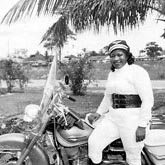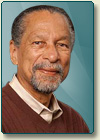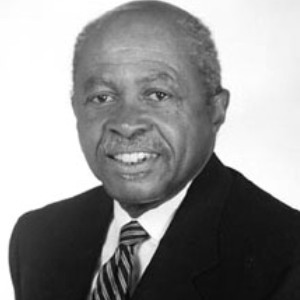In honor of Black History Month, here are few profiles of contributors to history of African descent:
Bessie Stringfield
The Motorcycle Queen of Miami
(1911–1993), nicknamed “The Motorcycle Queen of Miami”,[1] was an African American woman credited with breaking down barriers for both women and African American motorcyclists. She was the first African-American woman to ride across the United States solo and during World War IIshe served as one of the few motorcycle despatch riders for the United States military. The award bestowed by the American Motorcyclist Association for ‘Superior Achievement by a Female Motorcyclist’ is named in her honour. In 2002 Stringfield was inducted into the Motorcycle Hall of Fame. Stringfield was born in Kingston, Jamaica in 1911, but her parents migrated to Boston when she was still young. Her parents died when Stringfield was five and she was adopted and raised by an Irish woman. At the age of sixteen Stringfield taught herself to ride her first motorcycle, a 1928 Indian Scout. At the age of nineteen she commenced travelling across the United States and eventually rode through the 48 lower states. During this time she earned money from performing motorcycle stunts in carnival shows.[2] Due to her skin colour, Stringfield was often denied accommodation while travelling, so she would sleep on her motorcycle at filling stations. Continue reading




 Ninety percent of microphones used today are based on the ingenuity of James Edward West, an African-American inventor born in 1931 in Prince Edwards County, VA. If you’ve ever talked on the telephone, you’ve probably used his invention.
Ninety percent of microphones used today are based on the ingenuity of James Edward West, an African-American inventor born in 1931 in Prince Edwards County, VA. If you’ve ever talked on the telephone, you’ve probably used his invention.
 Even in high school, John Henry Thompson was interested in computer programming languages. He taught himself several programming languages such as FORTRAN, PLI, COBOL and JCL while working in a New York research facility. Thompson’s goal was to absorb as much knowledge as possible so he could invent his own computer language.
Even in high school, John Henry Thompson was interested in computer programming languages. He taught himself several programming languages such as FORTRAN, PLI, COBOL and JCL while working in a New York research facility. Thompson’s goal was to absorb as much knowledge as possible so he could invent his own computer language.
 Did you ever think of what it might be like if your television could project the on-screen image directly into your living room as a 3-Dimensional image? Maybe not, but if it happens, you’ll have African-American inventor Valerie Thomas to thank for it.
Did you ever think of what it might be like if your television could project the on-screen image directly into your living room as a 3-Dimensional image? Maybe not, but if it happens, you’ll have African-American inventor Valerie Thomas to thank for it.